In India, the definition of a good breakfast is one that warms your palate as well as your heart. And what largest than these desi delights to do the job?
Here, the phrase ‘breakfast like a king…’ is taken very seriously. With a cuppa chai to go with it, Indian breakfasts ensure your mornings start healthy and right and requite your palate the repast it deserves.
This is a map portraying 54 such delectable desi breakfasts famous in different regions of the country, each a speciality in its own right.
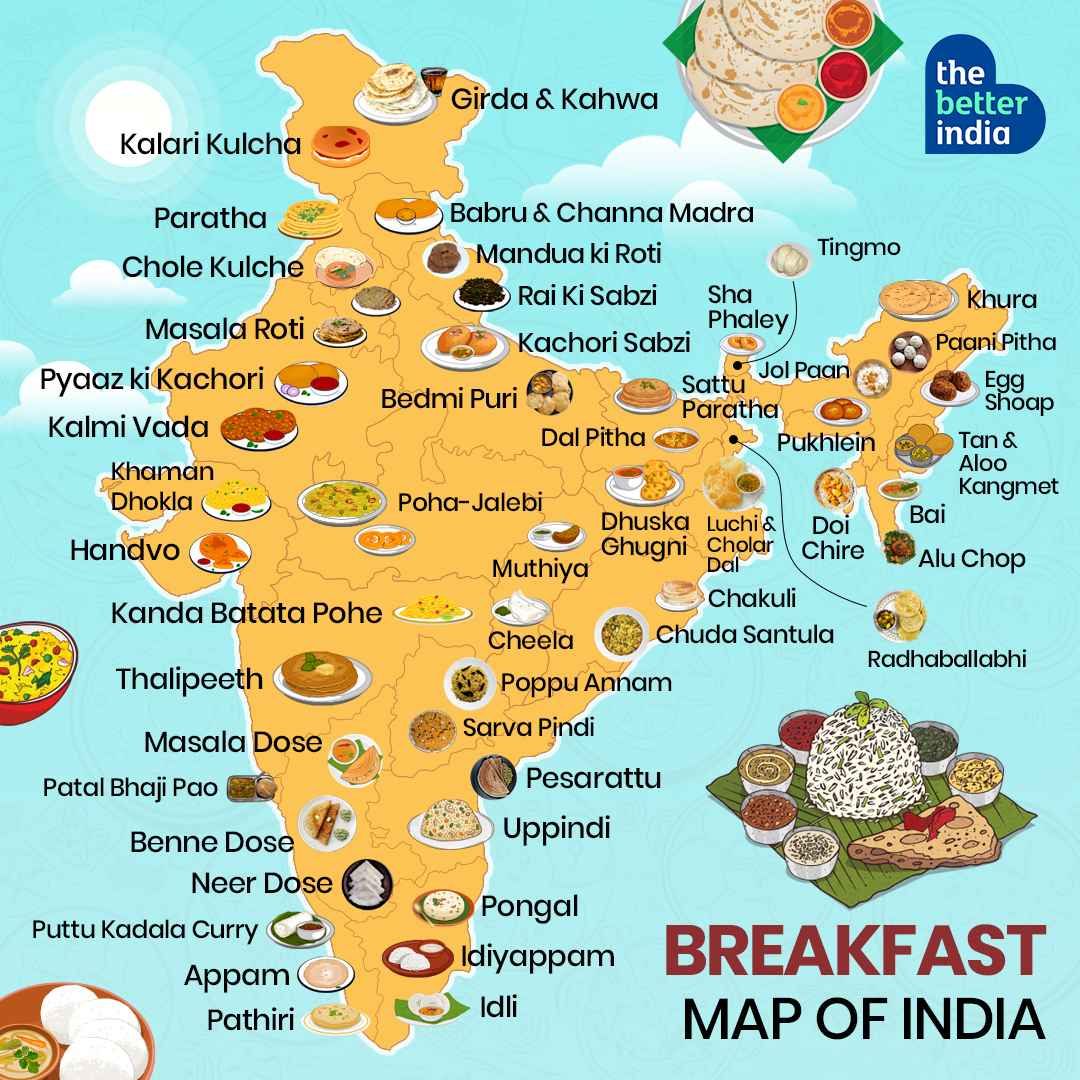
While every dish among these is heaven on a plate, here’s a deep swoop into five breakfasts of India.
Girda & Kahwa
Girda, a traditional fermented Kashmiri specie with kahwa, which is an exotic drink made of untried tea leaves, saffron, cinnamon, cardamom and cloves is famous in the Kashmir Valley. While the dish is easy to prepare, the specie needs to ferment for at least 12 hours to get the right notes of sponginess and chewiness.
Ingredients needed for girda, (Serves 6)
- 1 cup all-purpose flour
- 1 cup wheat flour/atta
- 2 tsp ghee
- Salt to taste
- 1 /2 tsp sultry powder
- 1 tsp poppy seeds
How to make girda:
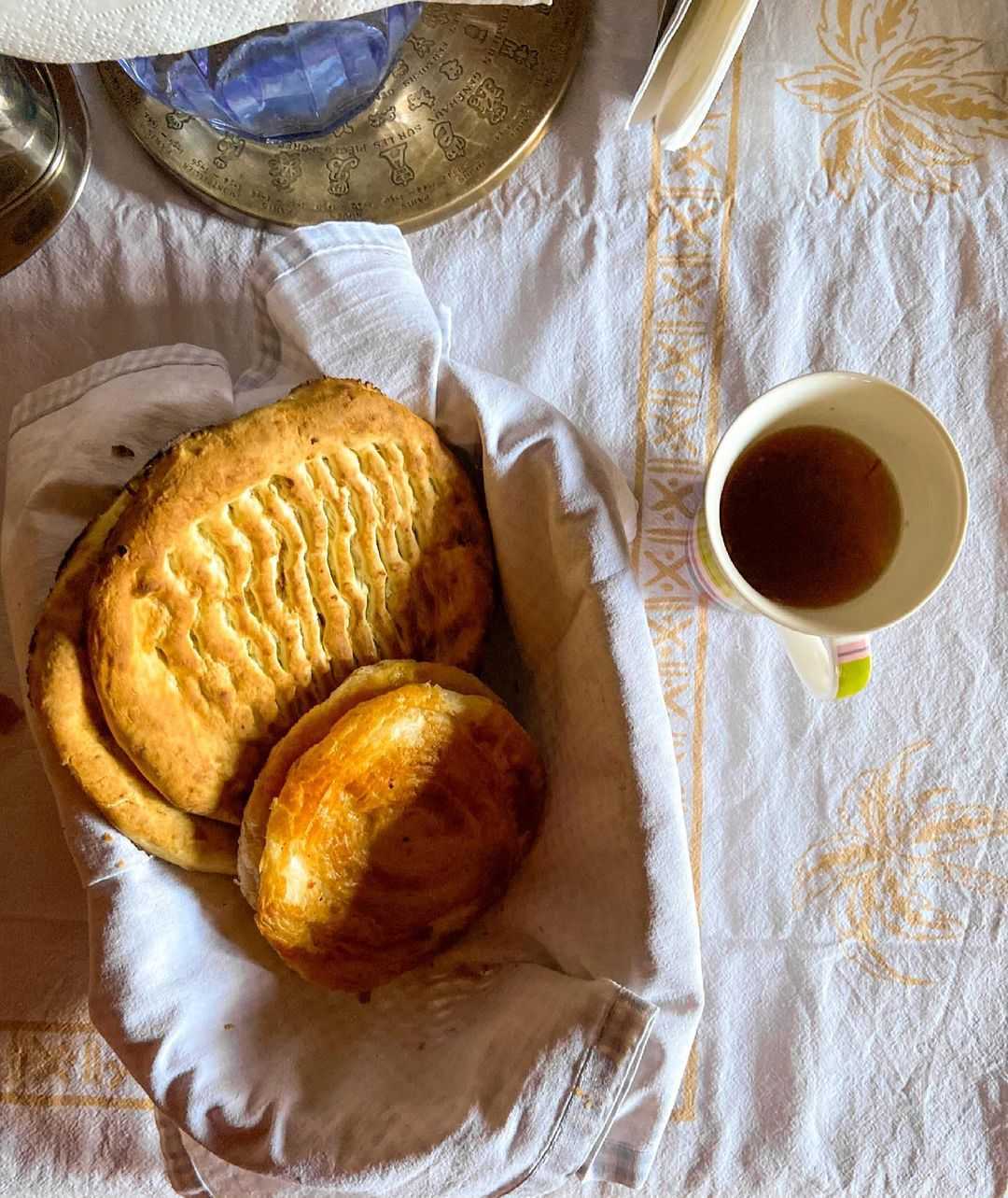
- Take the maida in a bowl, and knead it into a soft dough. Cover and leave it to ferment for at least 12 hours or overnight.
- When you are ready to make the bread, add the wheat flour, sugar if adding, salt and sultry powder.
- Knead to a soft dough subtracting water as required.
- Roll out as 6-diameter discs. Press the poppy seeds over the top and melt on a hot pan.
- You can flip to the other side and melt on low flame.
- Brush with ghee surpassing serving with a side dish.
How to make kahwa:
- Heat three cups of water in a pan.
- Add 10 to 12 strands of saffron, half-inch stick of cinnamon, one clove, half tsp zestless rose petals and one crushed cardamom in water and let it simmer for 3-4 minutes.
- Switch off the heat and add untried tea to the water. Let the tea steep for a minute.
- Strain the tea into 2 cups. Add two tsp almond slivers and a few strands of saffron. Add one tsp honey if you like your kahwa slightly sweet. Serve hot.
- Strain the kahwa in 2 cups.
- Add almond slivers and a few strands of saffron.
- Add honey if required.
- Serve hot.
Puttu Kadala Curry
The star ingredient of this South Indian breakfast is woebegone gram. It lends its protein and vitamin-rich qualities to the dish, thus providing a succulent taste withal with boosting health.
In fact, the dish has been termed the fast supplies of the 16th century for its versatility and ease of preparation. Its significance is that it used discarded rice that would otherwise be used for floor art.
Ingredients needed for puttu kadala curry, (Serves 4)
For pressure cooking:
- Black chana: 2 cups cooked (soak the zestless chana in unbearable water for at least 8 hrs).
- Turmeric powder: 1/4tsp
- Salt to taste
For roast:
- Grated coconut: 3/4 cup (fresh grated or frozen)
- Small red onion: 2 (sliced)
- Garlic: 2 (cloves)
- Coriander seeds: 1 tbsp or substitute with coriander powder: 1 tsp
- Whole garam masala: fennel seeds – 1 tsp
- Cardamom: 1 pod
- Cinnamon stick: 1/2 inch
- Star anise: 1
- Whole woebegone pepper: 10
- Curry leaves: few
- Coconut oil: 1 tbsp
For gravy:
- Onion: 1 cup (sliced)
- Red small onions: 2-4 (sliced)
- Green chillies: 3 (slit lengthwise)
- Red dank powder: 1 tsp
- Turmeric powder: 1/4 tsp
- Mustard seeds: 1/2 tsp
- Dry whole red chillies: 2 no
- Sliced coconut pieces: 1 tbsp
- Curry leaves: 1 sprig
- Coconut oil: 1/2 tsp
- Salt to taste
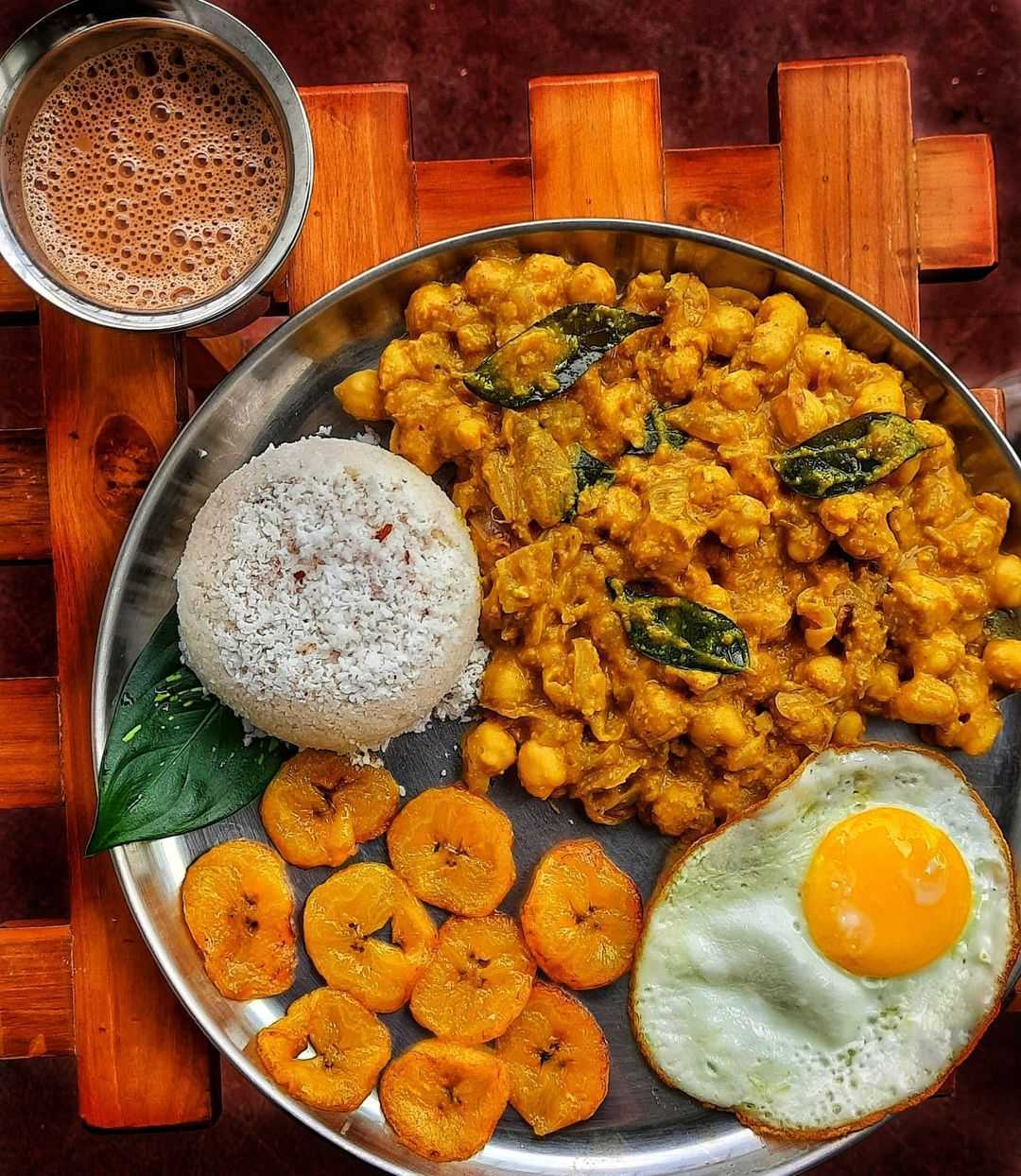
How to make puttu kadala curry:
- Soak woebegone channa overnight and pressure melt them by subtracting unbearable water, a little turmeric powder and salt for 5-6 whistles. Open when the pressure settles and reserve uneaten stock from the woebegone chickpea for the gravy.
- Heat coconut oil in a pan and add the whole spices; saute for a few seconds. Add the sliced pearl onions, sliced garlic, and curry leaves. Saute for a minute.
- Now add the grated coconut. Saute and roast on low fire till coconut turns medium brown. Remove from the fire and let it cool.
- Transfer the roasted coconut masala to a blender and grind the ingredients to a smooth paste subtracting very little water.
- In a big deep pan; heat coconut oil and splutter mustard seeds, and add dry red chillies.
- Now add the sliced coconut pieces and saute until they turn brown, add the sliced onion, sliced red small onions, untried chillies, salt and curry leaves. Saute until they turn light brown.
- Add turmeric powder, and red chilli powder, saute for a few seconds and add the reserved stock from the cooked kadala. Bring to a boil.
- Now add the ground coconut paste and cooked kadala. Mix well and retread the salt. Melt until semi-thick gravy. When it is done, remove and alimony the dish covered until serving.
Khaman Dhokla
A favourite in Gujarati cuisine, the dhokla is said to date when right to the 11th century. In unrelatedness to the dhokla which is made of gram flour, the dukkia, which was the precursor of the dhokla was made with pulses.
The spongy savoury confection is not only succulent but moreover a healthy fermented supplies quick to whip up.
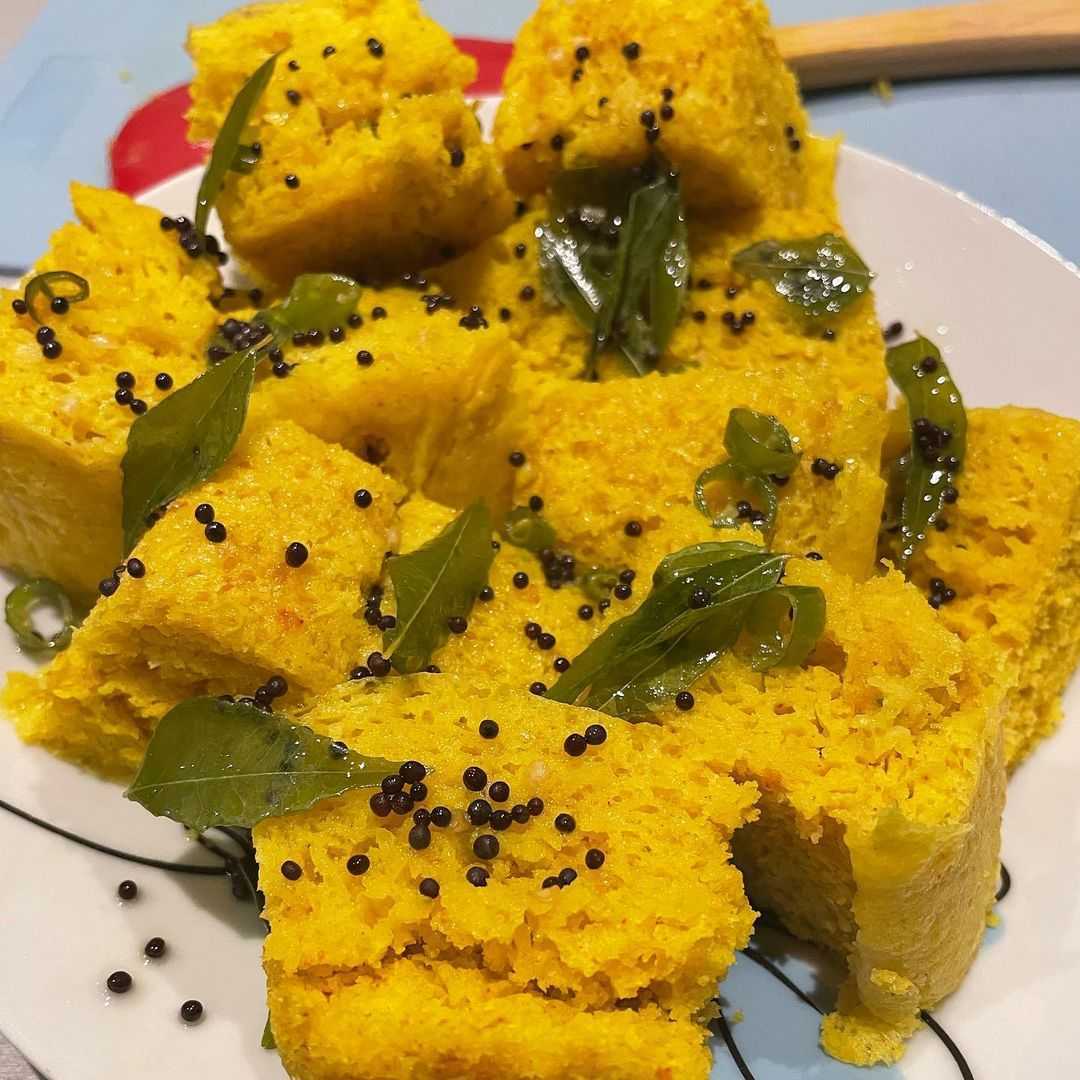
Ingredients needed for khaman dhokla, (Serves 4)
- Gram flour (besan) 2 cups
- Yoghurt whisked 1 cup
- Salt to taste
- Green chillies 2-3
- Ginger 1 1/2 inch piece
- Turmeric powder 1/2 teaspoon
- Oil 2 tablespoons
- Soda bicarbonate 1 teaspoon
- Lemon juice 1 tablespoon
- Mustard seeds 1 teaspoon
- Fresh coriander leaves chopped 2 tablespoons
- Coconut scraped 1/4 cup
How to make khaman dhokla:
- Take gram flour in a bowl. Add yoghurt and warm water and whisk well so that there are no lumps. The mixture should be of slightly thick consistency. Add salt and leave it covered to ferment for three to four hours. Grind untried chillies and ginger into a paste. When the gram flour mixture has fermented, add turmeric powder and untried chilli-ginger paste.
- Adjust seasoning and mix well. Heat the steamer. Grease a dhokla mould or shallow confection tin. In a small trencher take soda bicarbonate, one teaspoon of oil and lemon juice. Mix and add to the gram flour mixture and whisk briskly. Pour thrash into the greased thali and place it in the steamer. Cover with the lid and steam for ten to twelve minutes.
- When a little cool, cut into squares and alimony in a serving bowl/plate. Heat the remaining oil in a small pan. Add mustard seeds. When the seeds uncork to crackle, remove and pour over the dhoklas. Serve, garnished with coriander leaves and coconut.
Chakuli
A fermented rice pancake sort of dish, the chakuli is a popular breakfast in Eastern India, expressly Odisha. What is interesting is the way the dish is prepared, and how the precise value of salt determines the quality.
Salt is believed to slow lanugo the fermentation process of the rice and lentils, and if the right value of salt isn’t added, the dish can turn acidic.
Ingredients needed for chakuli, (Makes 15 pithas)
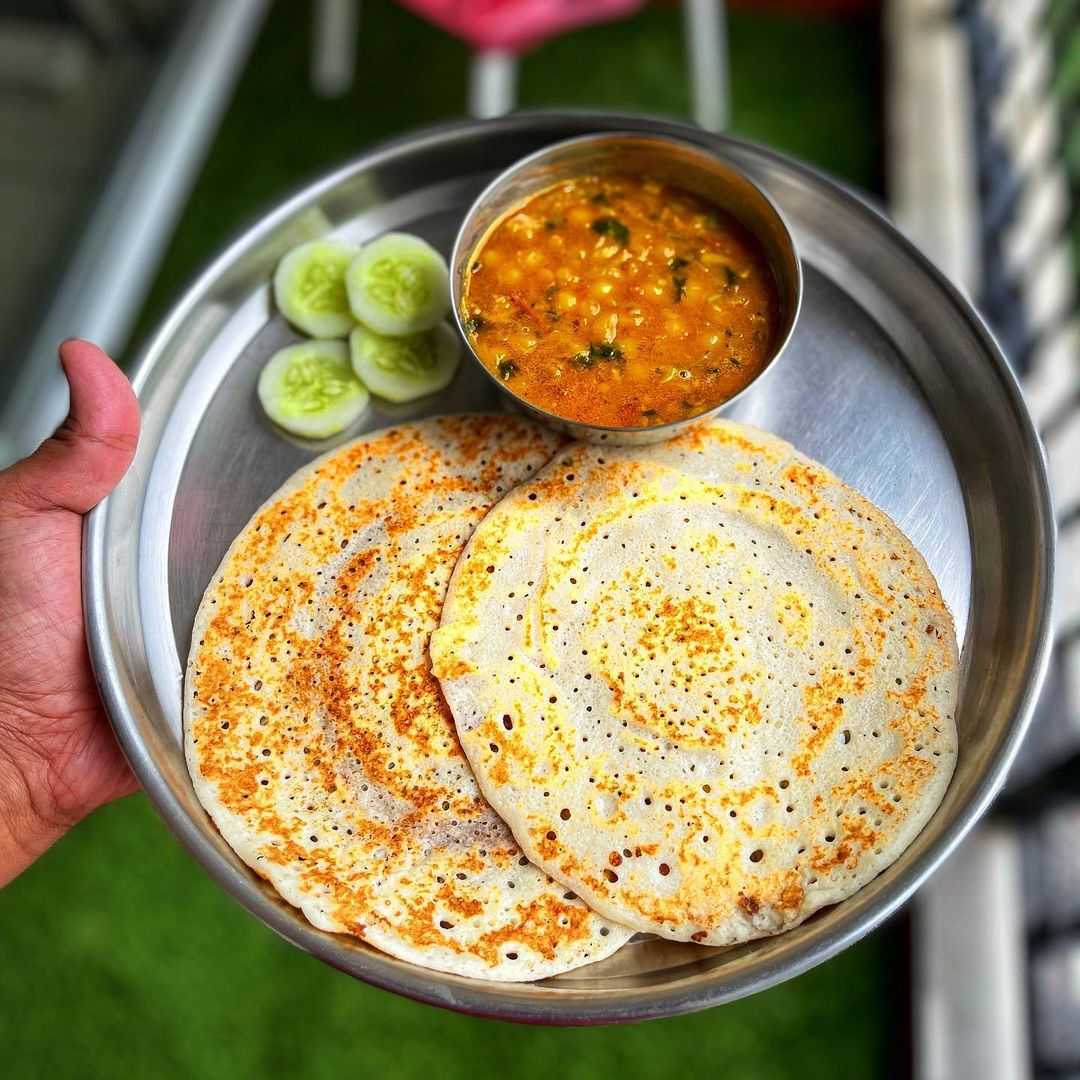
- 1 cup urad dal
- 2 cup rice
- Salt to taste
- Water as required
- Cooking oil as required
How to make chakuli pitha:
For the batter:
- Wash and soak urad dal and rice in water overnight. Then, filter out the uneaten water and grind it to make a fine paste. Add the rice and urad dal with just as required water. Save the uneaten water.
- Slowly add water as required to make a smooth batter.
- Keep whispered the mixture for 4 to 5 hours for fermentation.
- Add salt and water to the paste for making the thrash a little thin. Make sure the thrash doesn’t get too watery.
- This is the regular method of making, however, what’s moreover suggested is that you can make the pithas without 30 minutes of grinding and fermentation.
For the pithas:
- Heat a nonstick pan on medium flame.
- When the pan gets heated, grease well with cooking oil.
- Take a ladleful of thrash and spread it all over the pan in a circular shape.
- After a while, trammels the lower side of the pitha. Once the lower side turns brownish, flip it to the other side.
- When the pancake is cooked well from both sides, switch off the stove. Repeat the procedure for all the pancakes.
- Serve hot.
Egg Shoap
A cutlet made with eggs, potatoes and spices, an egg shoap is the perfect breakfast in Nagaland. Withal with stuff eaten as a breakfast meal, it can moreover be eaten as a deep-fried snack in the evenings.
Ingredients for egg shoap, (Serves 4)
- 4 whole eggs, boiled
- 3 potatoes boiled & mashed
- 1 onion, finely chopped
- 2 untried chillies, finely chopped
- 1 tsp cumin powder
- 1/2 teaspoon turmeric powder
- Salt, to taste
- 2 whole eggs, beaten
- 2 cups whole wheat specie crumbs
- Oil, for deep frying
How to make egg shoap:
- In a large mixing bowl, add potatoes and boiled eggs and mash them well together.
- Heat 2 teaspoons oil in a wok and add onions and untried chillies. Saute till translucent in colour.
- Season with salt, turmeric and cumin powder and fry for flipside 2 minutes.
- Add the fried onion mix into mashed potato and egg and mix well such that the flavours incorporate well.
- Meanwhile, heat oil in a deep frying pan.
- Shape the egg and potato mixture into round or oval cutlets.
- Dip them in tamed egg and roll over specie crumbs.
- Deep fry the cutlets till golden in colour.
Sources
Girda ~ Kashmiri Fermented Bread by Srivalli, Published on 5 October 2020.
Kashmiri Tea Kahwa by Neha Mathur, Published on 3 May 2020.
The history of Puttu and Kadala Kari by Madulika Dash, Published on 21 July 2022.
How to make Khaman Dhokla by Sanjeev Kapoor.
Edited by Yoshita Rao
